Plains Indian Dogs
The Plains
Indians were always known as the “Dog Breeders” and “Horse
Breeders.” During the ‘Dog Days’ before horses arrived
in the pre-Columbian times, the Plains groups had over three hundred thousand
dogs. They traded their Dogs with all the Nations all around them, combining
all the types in all Four Directions. By combining all the slightly different
types together gave them the perfect balanced combination and variables
needed to create and maintain the all around mix to do anything needed
of them. By breeding together in the proper recipe or ‘selective
breeding crosses’ using the smaller, quite hunting and herding type
Hare Indian Dogs from the northeastern areas and the barking bird and
bear hunters and herders from the northwestern Tahltan Indians. Plus the
larger Common from the southeastern and larger Village Indian Dogs from
the North. Adding the smaller pueblo Dogs from the southwest, created
an in between balanced Dog with just the right qualities to be the perfect
Dog for any work required of them. They were then traded back for new
bloodlines to all the surrounding Nations once again.
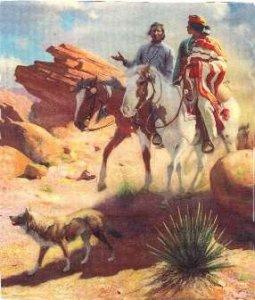
Notice coat color and pattern
still seen in the
modern Plains American Indian Dog
The Plains Dogs (or now called American Indian Dogs) were and are a medium sized Dog used chiefly for beasts of burden; pulling sleds, toboggans, travois and packs transporting food, wood, clothing and household goods. They were also used for hunting (sight, sound and scent) birds, small game, deer, bear and corralling buffalo for the kill. They served as watch dogs, baby sitters, keeping their masters worm at night and as food for ritual purposes and during famine times.
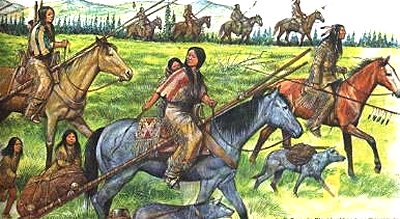
Example of the old ‘lead’ color, compared
to the modern blue of the
American Indian Dogs and blue roan horse
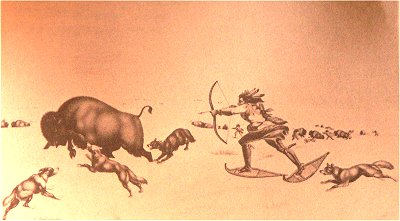
Old herding abilities of the old Plains Dogs, still here
in the modern American Indian Dogs
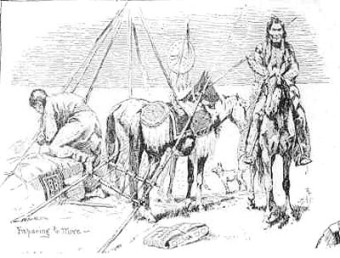
Plains Dog ready to have travois hooked up
and packed, for moving camp
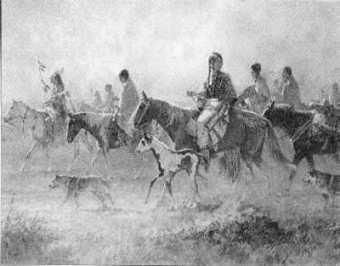
Notice same size and sable markings, compared
to modern American Indian Dogs
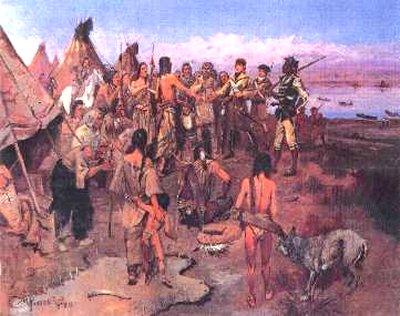
Notice
similarities of guarding, the sable brown color, etc .
from old to modern.
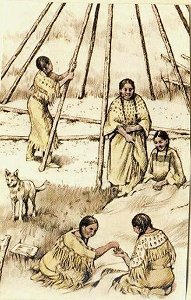
Notice old conformation, size and large erect ears of the old to
modern American Indian Dogs
The pattern of their markings on masked faces had color running down the nose and under the eyes with dots above the eyes called “four eyes”. They have longer hair around the neck called a ruff, (depending on coat length) with longer britches on their rear and a full tail held down or out, but never up unless showing dominance.
![]()
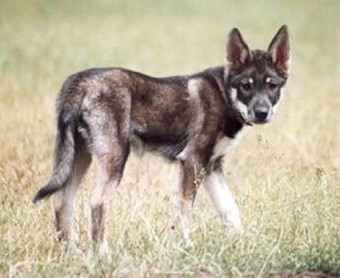
Typical sable color pattern of the Old Plains Dogs” (notice Northern influence)
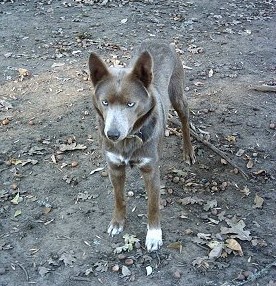
Ghost Dancer”, (Old color referred to as ‘Lead’) silver/fawn, sable
They were found mainly through out the Plains areas, but as they were constantly traded to other nations they were also found from the top of Alaska to the tip of south America scattered amongst the other types.
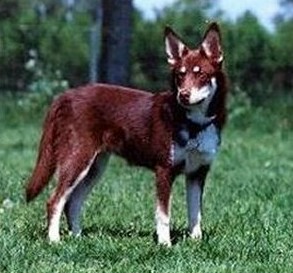
Shoshone” - a Chocolate/cream –
(notice the "4 eyes")
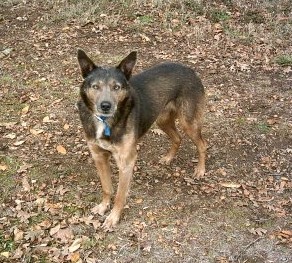
“ Rogue” – (Old Dark Lead color) –
Best stud dog sire for this generation
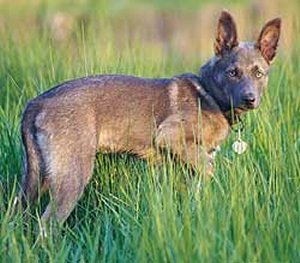
“Santana” – Brown/silver sable –
Notice large erect ears of the Plains dogs
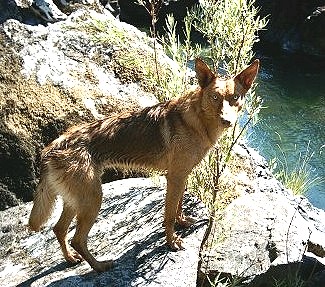
“Rogues Red Rider” – Golden Red sable –
(stud dog breeder)
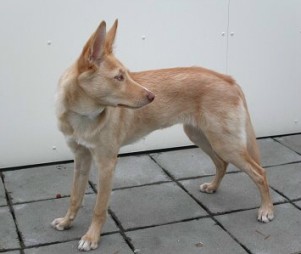
“Sabi” – Blond silver/cream sable –
notice refined long muzzle
We still maintain the different types within our modern breeding program
that were known to be bred with each other thousands of years ago and
together they are known as the American Indian Dogs. This keeps the variables
intact for when an out cross is needed to bring them back to the “Old
Balanced Ways” of the Elders, that where known to be great natural
geneticists, especially compared to modern inbred, blue blood, “fast
fix” the heck with the future, AKC type back yard breeders. …..
. This selective breeding process along with the proper controlled breeding
will hopefully keep the American Indian Dogs for future generations to
appreciate and enjoy them the way they were.
Click
on the links below to see articles and photos of both the
old and new American Indian Dogs.
